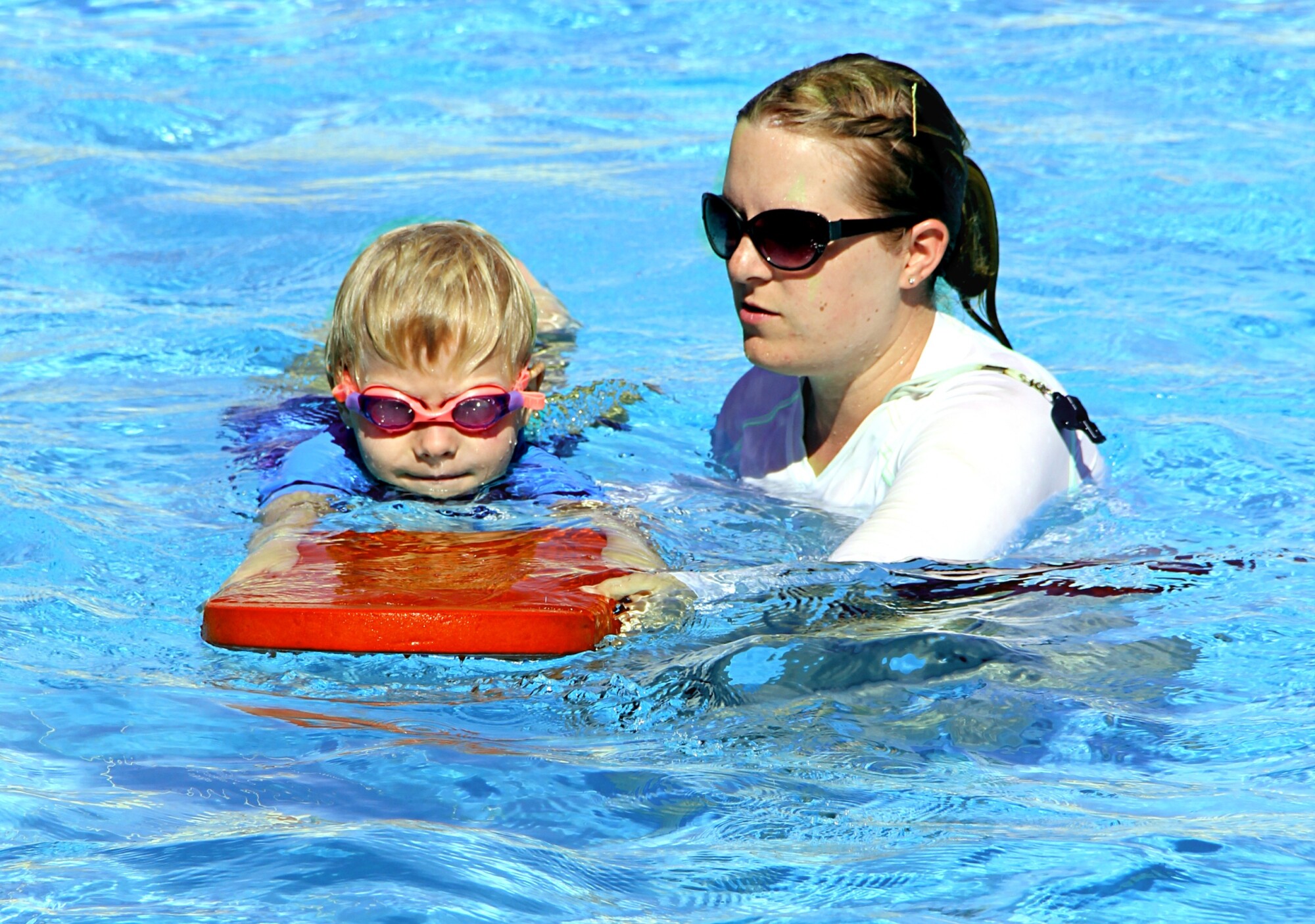
Swim lessons save lives. Almost 4,000 Americans drown every year. That is eleven deaths per day.
Learning how to swim will keep you and your child from facing this risk. But it’s not as easy as jumping into the pool and throwing your arms around. You need to prepare for your swim lessons.
What lessons should you find? How can you acclimate your child to the water, even if they are afraid? What safety guidelines should you be mindful of?
Answer these questions and you can learn how to swim in no time. Here is your quick guide.
Find the Right Swimming Lessons
You can find a variety of lessons at any center. Many centers focus on lessons for children, but you can find them for adults as well.
Red Cross swim lessons are great for beginners. Preschoolers can learn how to enter and exit the water and perform basic moves like bobbing.
Elementary school children as young as six years old, can practice treading and floats. Once they have those essential movements, they can progress to strokes and kicks.
If you want one-on-one lessons, you can work with a personal trainer. They can provide you with a customized workout plan that you can practice on your own time. You can also take lessons in small groups.
Wear the Proper Clothing
Many people know that they have to wear a swimsuit to the pool. But you shouldn’t buy the first one you see.
Try different ones out. Make sure you have enough room to move your arms, torso, and legs. It should fit tightly, but you shouldn’t feel constricted.
If you are worried about getting cold, you can wear a wetsuit. This wraps around your entire body, keeping your arms and legs warm. Make sure it fits you properly before buying it.
Everyone who goes on a boat should wear a life jacket. It does not matter what experience or skill you have.
Preschoolers should always wear a jacket every time they go in the water. Inflatable swimming aids are not life-saving devices. But they can make swimming easier, so you should have one for your child.
Acclimate Your Child
Babies who are younger than six months should have limited access to water. They get hydrated through milk and formula. They can drink small amounts of water, but it is hard for them to digest.
You should not bring your baby to the pool or lake. But you can get them used to the water.
Pour small cups of water over your baby’s head as they sit in the bath. Encourage them to keep their mouth closed and prevent the water from over-flooding.
Some children are afraid of water. You can help them overcome their fear. Have a conversation with your child and engage them in some initial lessons.
Learn First Aid Tips
Learn how to perform CPR and mouth-to-mouth resuscitation, specially if you have young children or babies.
Study the signs of drowning. Many people drown without screaming for help. You must watch your child without distractions while they swim.
Many people’s first instinct when they see someone drowning is to jump in and help them. This can cause them to drown. A drowning person often loses coordination, grabbing onto the person who is trying to save them.
Try to reach the drowning person on land. Lie down flat and extend your arm out. You can go into a pool, but you should stand on the ladder and hold to them.
If you can’t reach them, use an object like a pool noodle or an oar. If that’s not an option, toss them a floatation device. You can also swim out to them and throw the device toward them.
The situation is not over once they are out of the water. Dry drowning occurs when the muscles in the throat become constrained after a person falls in the water. Secondary drowning occurs when water pools in the lungs and impedes breathing.
Watch over your child carefully. If you fall into the water, get a medical professional so they can examine you.
Start Going to the Pool
Swimming lessons can give you a firm structure to develop water fitness. But you should give yourself some time to develop skills on your own.
Before you start your lessons, head out to the pool. Find one with a lifeguard and other people around.
Step into the water and get a good sense of how it feels. It may be cold or tingling. The more time you spend in it, the more comfortable you will get.
When you take a break, step out of the pool and watch others as they swim. See how they float, tread, and glide through the water.
Keep in mind that they may be very experienced. It will take some time for you to learn how to perform a good butterfly stroke. But studying others will help you get there eventually.
How You Can Prepare for Swim Lessons
Swim lessons will keep you safe. But you need to prepare for them. Find the best classes for your needs, namely from the Red Cross.
Get a swimsuit that gives you comfort and mobility. Teach your child about the water. If they are afraid, sit down and comfort them.
You should learn how to perform CPR and recognize drowning. Do not jump in to save a drowning victim. Get used to the water yourself with a visit to the pool.
Visit a swimming center that will meet your needs. The Wave serves the Whitefish area. Become a member today.



